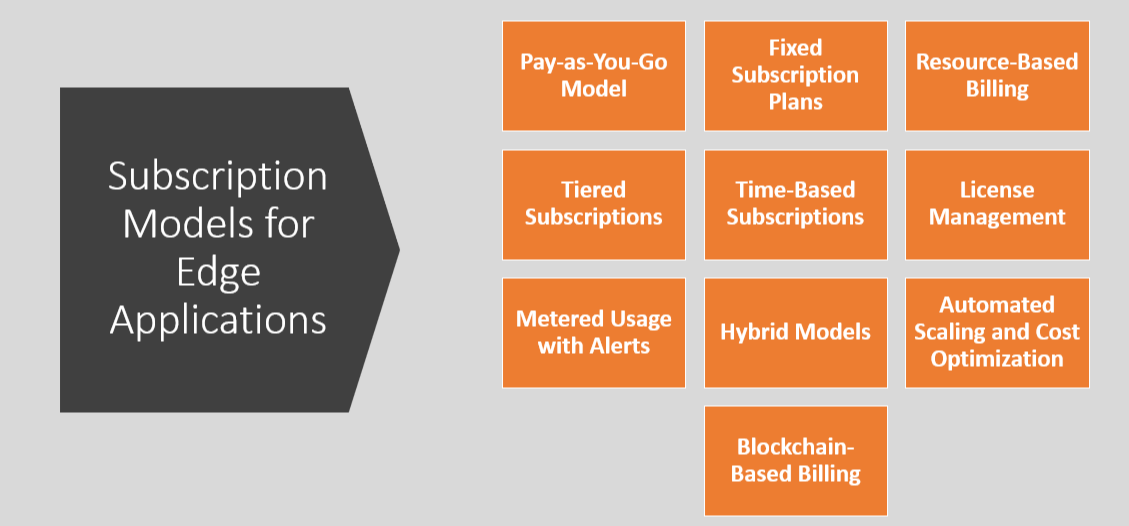In the ever-evolving landscape of technology, the adoption of Edge computing platforms is becoming a pivotal force in reshaping the way applications are deployed and managed.
Edge computing brings computing resources closer to the data source, enabling faster response times, reduced latency, and increased efficiency. As businesses continue to leverage the power of Edge, the importance of correctly monetizing these deployments becomes a crucial aspect of sustainable growth and innovation.

Adoption of Edge Computing Platforms: Unleashing the Power of Proximity
Edge computing, with its promise of reduced data transfer times and enhanced performance, has found applications in diverse fields such as IoT, real-time analytics, and immersive experiences.
As organizations invest in Edge infrastructure, the need for effective subscription models arises to ensure a scalable and profitable approach to managing these distributed systems.
Monetizing Edge Deployments: The Key to Sustainable Growth
Monetizing Edge deployments involves aligning the value delivered by applications with a pricing strategy that reflects the unique advantages of Edge computing. This not only ensures a fair return on investment but also encourages innovation and the development of cutting-edge solutions.
Let's delve into some of the subscription models that can be employed for Edge applications:
- Pay-as-You-Go Model: Flexibility in Consumption
The Pay-as-You-Go model allows users to pay for Edge resources based on actual usage. This flexibility caters to varying workloads and ensures that organizations pay only for the resources consumed, making it a cost-efficient choice for dynamic Edge environments.
- Fixed Subscription Plans: Predictable Budgeting
Fixed Subscription Plans offer predefined resource allocations and costs, providing users with predictability and ease of budgeting. While suitable for stable workloads, they may lead to over-provisioning if resource needs fluctuate.
- Resource-Based Billing: Granular Resource Management
Resource-Based Billing charges users based on the specific resources consumed (CPU, memory, storage). This model offers a more granular approach to billing, aligning costs directly with usage and ensuring optimal resource allocation.
- Tiered Subscriptions: Tailoring to Diverse Needs
Tiered Subscriptions involve offering different subscription tiers with varying levels of service, features, and resource allocations. This provides flexibility, allowing users to choose a tier that aligns with their specific requirements and budget constraints.
- Time-Based Subscriptions: Flexibility in Duration
Time-Based Subscriptions charge users based on the duration of their Edge computing usage. This model is beneficial for short-term projects or workloads, offering flexibility and cost-effectiveness for temporary deployments.
- License Management: Ensuring Compliance and Control
License Management plays a critical role in subscription models by ensuring compliance and preventing unauthorized usage. Organizations can control access to Edge resources and maintain a secure and regulated environment.
- Metered Usage with Alerts: Proactive Cost Management
Implementing Metered Usage with Alerts involves monitoring resource consumption and sending notifications when predefined thresholds are reached. This proactive approach helps users stay within budget and avoids unexpected costs.
- Hybrid Models: Balancing Flexibility and Predictability
Hybrid Models combine different subscription approaches, providing a balance between flexibility and predictability. This allows organizations to tailor their subscription strategy to the specific needs of their Edge applications.
- Automated Scaling and Cost Optimization: Efficiency in Resource Utilization
Automated Scaling and Cost Optimization involve implementing automation to scale resources based on demand and optimize costs. This ensures efficient resource utilization and cost savings in dynamic Edge environments.
- Blockchain-Based Billing: Transparency and Security
Blockchain-Based Billing enhances transparency and security in subscription management. Utilizing a decentralized ledger, this model reduces the risk of billing disputes and ensures a tamper-resistant record of transactions.
Conclusion:
While edge is being adopted at scale, choosing the right subscription model is paramount for organizations looking to maximize the benefits of their deployments.
Whether it's the flexibility of Pay-as-You-Go, the predictability of Fixed Subscription Plans, or the granularity of Resource-Based Billing, each model offers a unique approach to monetizing Edge applications.
By carefully selecting and implementing these models, businesses can not only optimize costs but also pave the way for continued innovation and growth.